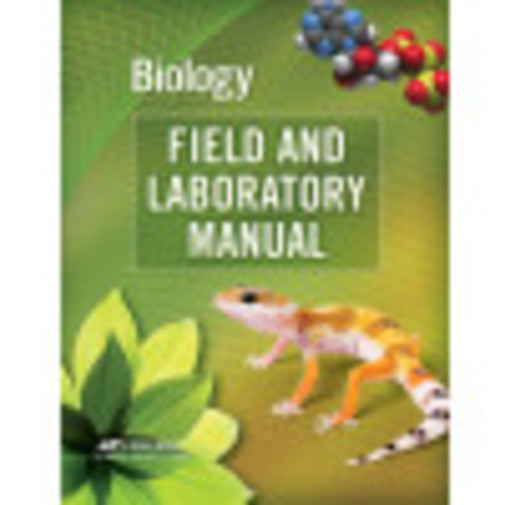We use cookies to make your experience better. To comply with the new e-Privacy directive, we need to ask for your consent to set the cookies. Learn more.
Biology: God's Living Creation Field and Laboratory Student Manual
The Field and Lab Manual provides 25 experiments and 3 additional projects. Each experiment begins with an overview, equipment and supply lists, step-by-step instructions and a report sheet. You will need to provide numerous items including a lab coat/apron, safety glasses/goggles, 400x compound microscope, dissection tray and tools, slides, dissection specimens (sheep brain and heart, fetal pig, frog, perch, grasshopper, crayfish, starfish, and earth worm), beakers, test tubes, prepared slides, and numerous other items. Please contact us for the full list. For your convenience, we also offer the companion Lab Demonstrations DVD, which gives students the opportunity to view all 25 experiments and 2 of the additional projects (The Tree Identification Project is not included). Use the DVD to supplement or replace the hands-on experiments. If your student is college bound in the sciences, you may still wish to implement some of the hands-on experiments at home to better prepare them.
From observing blood cells to constructing DNA models, your teen will apply the topics he's learned in Biology: God's Living Creation, 4th ed. This 204-page book provides 25 labs that add a practical, hands-on component to the biology course including lab safety, microscopy, and dissection. Includes field projects that develop the skills of observation, organism identification, and classification. Each lab includes a list of goals for the lab, an introduction (when needed), list of equipment and supplies, procedure steps and explanation, a report sheet, and questions to answer. Illustrations and diagrams make the procedure clear. Three extra projects on the identification of trees and insects and a pond study are included in the back of the book for those who want their teen to experience more in-depth research.
Items listed in this section tend to be complete science programs with a teacher and student component, requiring few supplements besides science supplies.
Instilling an academically solid, God-centered understanding of all branches of science from the early elementary years through high school is the mission of this traditional curriculum. Uniquely, Abeka focuses on mastery of the sciences from a young age through two pathways. First, the science curriculum follows a spiral approach to learning, which means students review previously learned concepts each year, expanding on known concepts and learning new material. The second path, if you chose to use Abeka curriculum in other subjects, is the integration of the grade level scope and sequence, which takes the material taught in science and reinforces it in other subjects like language arts and reading comprehension. While this approach is helpful for mastery, it is not necessary to use other Abeka courses to gain a thorough understanding of the sciences. Scripture references are KJV.
Following a traditional philosophy of education, the basic components include a student text and a teacher edition and/or answer key. Student textbooks are full color and written at a level that each learner can read and understand. Teacher edition content will vary depending on the grade. At all grade levels, Abeka science is teacher led and not designed for independent student work, although at the higher levels, students may be able to do some reading and related activities independently. The K-2 teacher guides include all the information needed to teach science successfully from the scope and sequence and lesson plans with teaching notes, to the activity suggestions and answers (except kindergarten). Beginning in Grade 3 through the high school courses, teacher resources have been divided into separate categories. While this may seem overwhelming, targeted teacher resources help parents and teachers find what they need quickly. Additional supplemental resources may be available. Student and teacher books are not reproducible. See individual descriptions for more information. ~Deanne
| Product Format: | Paperback |
|---|---|
| Brand: | A Beka Book |
| Grade: | 10 |
| Length in Inches: | 11 |
| Width in Inches: | 8.5 |
| Height in Inches: | 0.4375 |
| Weight in Pounds: | 1.1 |

